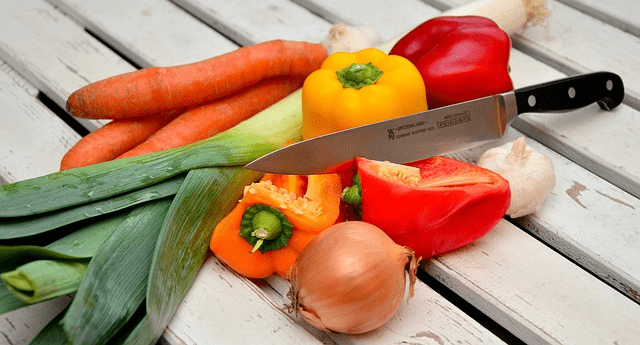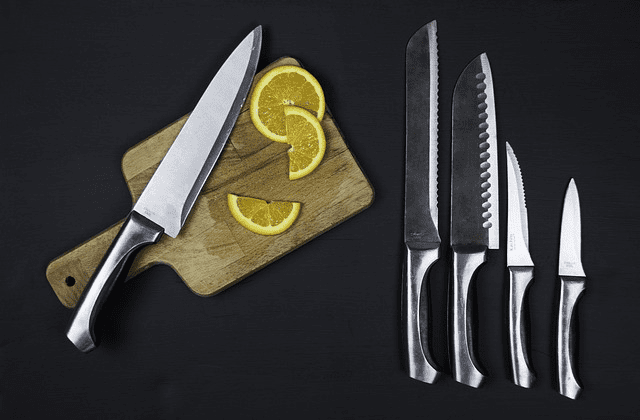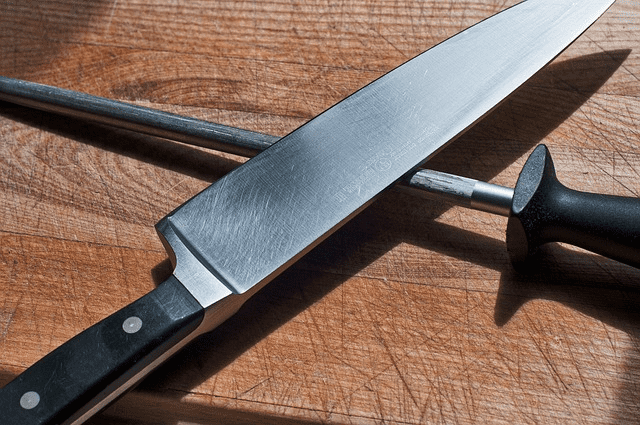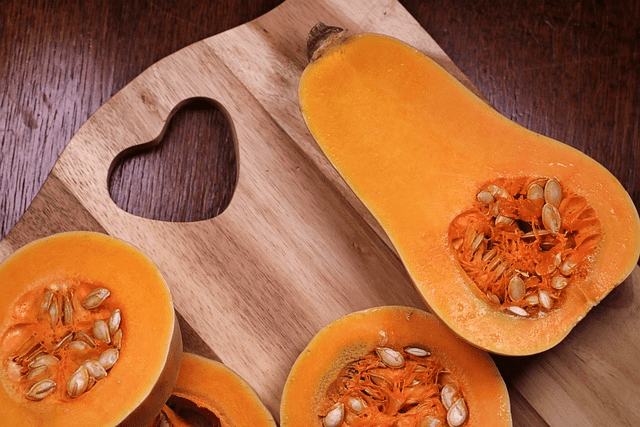The 5 Best Knives For Vegetables (2023)

Having the right tools as a home cook is essential. One of the most important things is excellent kitchen knives with sharp blades. It makes a lot of difference when preparing meals. The danger of cutting yourself is more serious with a dull knife since you have to make more effort to do the actual cut.
When you decide to invest in a good knife, it changes everything. Suddenly, slicing vegetables will be effortless and precise. Your blade will be cutting veggies like butter, and the slices will be even and beautiful. Your dishes will look more impressive, and you can have consistent results, boosting your confidence in the kitchen.
In this article, we’ll look at five of the best knives for cutting vegetables. From classic chef’s knives to Japanese-style nakiri knives, we’ll show you each type of knife, and its purpose, to pick the right one for your needs. Whether you’re an experienced home cook or just starting, having an excellent knife in your collection can help elevate your meals and take your cooking to the next level. So let’s get started!
What are the best knives for vegetables?
Before purchasing, you must figure out what type of knife you need. There are multiple best choices and a suitable knife for every task. We’ll show you the five most common ones.
Chef’s Knife
A chef’s knife is an all-purpose knife in the kitchen. It’s considered an essential tool in a chef’s arsenal. Perfect for chopping, mincing, slicing, and dicing. The blade is typically 8-10 inches long. It has a sharp point, and a curved cutting edge allows for rocking back and forth, making chopping vegetables quick and efficient. Chef’s knives are generally well-balanced, making them comfortable over long periods. If you plan to buy only one knife, buy a chef’s knife.
Best chef’s knives for cutting vegetables

WÜSTHOF Classic 8 Inch Chef’s Knife
Blade Material: Forged from a single block of High Carbon Stainless Steel
Price range: 3/5
Length: 8″
Handle: long-lasting synthetic material to resist fading and discoloration
This all-around knife can be your best kitchen gadget for many years. It’s versatile and a good pick for someone seeking a high-quality general knife.
Mercer Culinary M20608 Genesis 8-Inch Chef’s Knife

Blade Material: High Carbon Steel
Price range: 1/5
Length: 8″
Handle: Santoprene
The Mercer is a budget-friendly option. It can be a good choice if you have just started your home-cook journey.
Santoku Knife
A Santoku knife is a Japanese-style knife with a shorter, wider blade than a chef’s knife. This type of knife is excellent for slicing and dicing vegetables because it has a flatter edge, making cutting through larger veggies like onions and cabbage easier. A Santoku Knife is designed for slicing, chopping, and dicing vegetables.
Best santoku knife
Shun Classic Blonde 7” Santoku Knife

Blade Material: Alloy Steel
Price range: 4/5
Length: 7″
Handle: Pakkawood
This santoku knife is best for slicing vegetables. This is a light and maneuverable kitchen knife with perfect balance. This is a Japanese hand-crafted for those who want the best quality.
Paring Knife
A paring knife is a small, thin blade perfect for precise cuts, peeling, and decorative work. This knife is handy when preparing miniature vegetables like garlic, shallots, and cherry tomatoes.
Best paring knife
Shun Cutlery Classic Paring Knife 3.5

Blade Material: VG-MAX Stainless Steel
Price range: 4%5
Length: 3,5″
Handle: Ebony color PakkaWood®
Constructed with Shun’s VG-MAX cutting core and 68 layers of stainless Damascus, this paring knife is corrosion and stain-resistant with a sharp edge.
Nakiri Knife
A nakiri knife is another Japanese-style knife explicitly designed for chopping vegetables. It has a flat blade allows for precise chopping and slicing, and the straight edge is ideal for cutting through vegetables without squishing them.
Best Nakiri knife

Shun Cutlery Premier 5.5″ Professional Nakiri
The Shun Premier 5.5-inch Nakiri Knife is a Japanese-style knife highly regarded by professional chefs and cooking enthusiasts for preparing fruits and vegetables.
With a straight blade, edge, and spine, it’s perfect for simple push cuts, and the blunt end makes it extra safe to use.
Constructed from Shun’s proprietary VG-MAX cutting core and clad in 68 layers of stainless Damascus with a hammered TUSCHIME finish, this cooking knife is highly durable, corrosion-resistant, and has a razor-sharp edge.
The walnut-finished, contoured Pakkawood handle offers precise control and comfort to the user.
Cleaver
A cleaver is a larger, heavier knife commonly used in Chinese cuisine. While it might not be the first knife that comes to mind when you think of vegetable prep, it can be beneficial when working with harder vegetables like squash and root vegetables.

Best cleaver for vegetable cutting
ZWILLING Twin Signature 7-inch Chinese Vegetable Cleaver
Zwilling knives are ultra razor-sharp and stay sharp even with minimal care.
The knives are crafted from specially formulated German stainless steel, ice-hardened for superior resilience, and have exceptional balance for comfortable cutting.
The ergonomic polymer handle is perfectly bonded to the full tang blade, giving it the best balance and force when using a knife.
Important Factors To Consider Before Buying your Knife

When choosing the right knife for your kitchen, you have to keep these factors in your mind:
Blade Material
The material of the knife’s blade is essential. It will affect its durability and ability to hold an edge. Best vegetable knives are made of stainless and high-carbon steel, as they are durable and resist rust and staining.
Handle Material
The material of the knife’s handle is another important factor, as it can affect your hand’s balance and comfort. Common handle materials include wood, plastic, and metal.
Size
You must pick the right size knife for the suitable vegetable. A larger knife may be better for chopping more giant vegetables like squash, while a smaller knife is ideal for more delicate tasks like peeling and trimming.
Price
Finally, when choosing a knife, your budget can be a limiting factor. Always try to pick the perfect fit for your wallet. Best knives can get very expensive; however, most of the time, a cheaper one can do the job just as well.
Consider these factors before making your purchase. Choosing the correct type of knife for vegetable cutting can make your time in the kitchen more enjoyable and efficient.
Maintenance Tips for Your Knives

Once you’ve invested in a quality vegetable knife, taking care of it is essential to ensure it lasts many years. Here are some tips for maintaining your vegetable knife:
Hand wash and dry
Most knives are not dishwasher safe. It’s important to hand wash and dry them after each use. Use a mild detergent and a soft sponge, and dry the blade thoroughly to prevent rust. This will extend your knives’ lifespan and keep them sharper.
Store properly
Store your knife in a knife block, magnetic strip, or sheath to protect the blade and prevent accidents. Avoid storing your knife in a drawer, as it can become damaged or dull when it comes into contact with other kitchen tools.
Sharpen regularly
Even the best stainless steel blade will eventually become dull with regular use. Sharpen your knife regularly using honing steel or a sharpening stone. If you’re uncomfortable sharpening your knives, consider taking them to a professional.
Use a cutting board
Always use a cutting board when using your knife, as cutting on hard surfaces like countertops can dull the blade quickly. The wooden board is the most common pick, but you can also use bamboo or plastic to protect your knife and extend its lifespan.
Avoid cutting hard objects
Vegetable knives are designed for cutting vegetables and should not be used on hard objects like bones or frozen foods. Doing so can cause the blade to chip or become damaged.
Following these knife care tips ensures your blade remains sharp and effective for years.

This article shows there’s not a single answer to the question, “which are the best knives for cutting vegetables.” There are several factors to consider. I hope I could give you enough information so that you can choose. Happy chopping!
